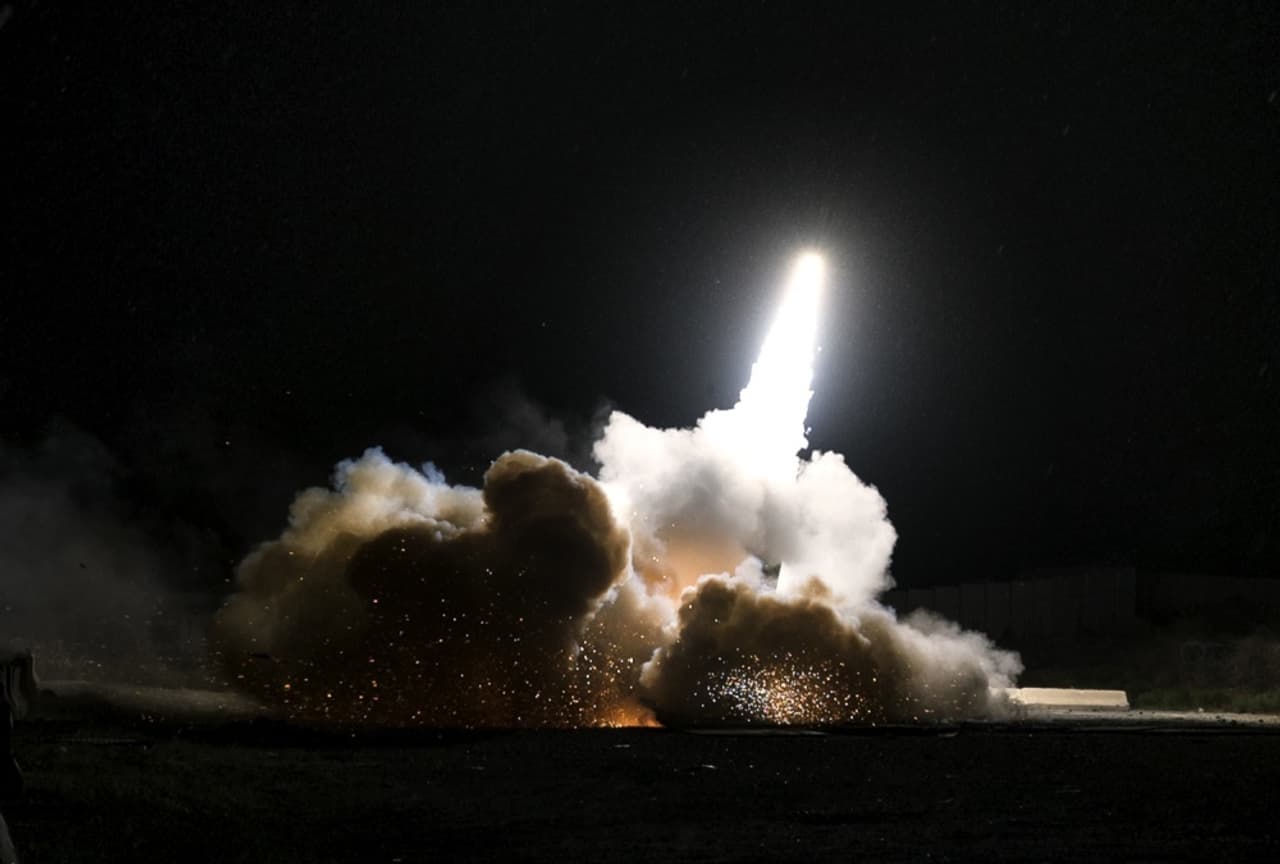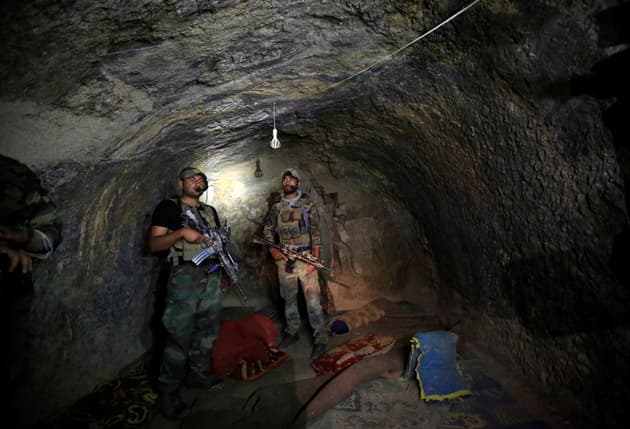
Islamic State in Afghanistan: Is US assault working?
In late June, a US aircraft flying over the eastern Afghan province of Nangarhar released its payload - one of hundreds of such strikes against the local franchise of the Islamic State group that has established a stronghold in the region’s valleys and mountains.
The US has been targeting the small but brutal band of fighters since January last year, at one point even hitting the group with the largest non-nuclear bomb it has ever used in combat. According to the latest US estimates, their numbers in Afghanistan have now been whittled to around 1,000 from early estimates of 3,000.
But the June strike and its aftermath illustrates some of the problems with the campaign against Islamic State Khorasan (IS-K) - as the franchise is known. In the areas controlled by IS-K, where neither the US nor the Afghan government has much of a human intelligence network, it can be hard to tell what is going on on the ground - and what is being hit.
US strikes in Nangarhar are more likely to result in civilian casualties than strikes anywhere else in Afghanistan, according to UN data, and some analysts say this is likely the result of the blanket way strikes are being carried out with little on the ground information to guide them.
Shortly after the attack in late June, IS-K associated propaganda outlets on the messaging app Telegram began to post graphic images of the corpses of children. The attack had killed many such innocents, according to the group.
When the Bureau asked the Afghan Ministry of Defence and the provincial governor’s office about these claims, they said they knew nothing about the attack. But through tribal elders and a provincial council member a narrative of sorts filtered through - they had heard that civilians were killed in a strike, including women and children. One elder reported they were the extended family of an IS-K judge, widows of dead fighters and their children.
The Nato mission in Afghanistan - Resolute Support - provides official responses to civilian casualty claims. Most of allegations like this are either dismissed or deemed credible enough to be put forward for an in-depth investigation.
In the case of the late June Nangarhar strike however, the response was that they simply didn't know: “We were unable to conclusively prove that the civilian casualties were the result of US air strikes," Resolute Support told the Bureau. "We also were unable to conclusively disprove that US air strikes were the cause.”
Reports have already surfaced of another US strike killing civilians in the province, this time in Nangarhar’s Haska Mena district. Residents have said the strike hit a funeral ceremony on July 23, killing eight civilians. Resolute Support told the Bureau it was conducting an initial inquiry into the claims. A spokesperson said, “I can confirm that we did take strikes in that general area, and the investigation will seek to determine whether our strikes resulted in deaths and injuries to non-combatants.”
The cost of the battle
Strikes against the group often take place in areas where many of the original inhabitants have already fled. IS-K are thought to have originated with fighters who came over the border from Pakistan and gradually established a strong position in Nangarhar, taking territory from the Taliban as well as the government.
But Borhan Osman, a researcher for Afghanistan Analysts Network, says it is likely the wives and children of militants now reside in the places controlled by the group. The blanket way people are treated as IS-K fighters in these areas, alongside a lack of intelligence, paves the way for civilian casualties, he adds.
The US is pressing IS-K hard in Nangarhar, launching an offensive in early March 2017 with Afghan forces to drive the group from the province. A few districts have seen the fiercest fighting, with air strikes, and reportedly even ground-launched rockets, raining down on them. In a single day in July, the US carried out 27 strikes in Achin district alone. The US has paid a price – all but one of the seven US soldiers killed in Afghanistan this year died in Nangarhar.
 Afghan Special Forces inspect a cave in Nangarhar which was used by suspected Islamic State militants at the site where a MOAB, or “mother of all bombs” was dropped by the US in April 2017.
Photo by Parwiz/Reuters
Afghan Special Forces inspect a cave in Nangarhar which was used by suspected Islamic State militants at the site where a MOAB, or “mother of all bombs” was dropped by the US in April 2017.
Photo by Parwiz/Reuters
As the barrage of bombs continues, there is no clear consensus on what IS-K actually is. Some observers see it as a cohesive group, at least in Nangarhar province, with a communication line to Islamic State in Raqqa, the crumbling capital of the caliphate. But others believe IS-K is much less organised, made-up of men with shifting alliances, and, as one Western official in Kabul put it, “dressed up in scary black costumes”.
“The American military is hoping for a 'win' that could be presented to Trump as a 'victory' in Afghanistan," the official said. "So the international forces are raining hell down on a very small militant group that just happens to have adopted IS branding.”
The end of IS-K?
Deadly and sometimes clumsy though the US-led campaign may be, there is significant support for eliminating Islamic State.
The militants’ Afghanistan branch is feared for its brutality. Former residents of IS-K controlled areas of Nangarhar talk in horror of the atrocities they witnessed.
“They pulled out my brother’s teeth before they forced him to sit on the bombs,” tribal elder Malik Namos told Washington Post. Namos had just escaped a valley IS-K had taken control of. “They are more vicious than the Taliban, than any group we have seen,” he said.
When the group took over Tora Bora, a system of mountainous caves that were once the hideout of Osama Bin Laden, villagers took up arms. Some residents celebrated the US decision to drop the largest non-nuclear bomb it has ever used in combat on a system of tunnels and bunkers used by IS-K, a move which Afghan officials have said killed up to 100 members of the group.
Is Islamic State in Afghanistan being weakened?
The US military has vowed to defeat IS-K by the end of 2017, but is unclear if they are on track to achieve this goal.
The group’s numbers now stand, according to the latest US military estimates, at around 1,000.
Fighters are present in five provinces, according to Captain Salvin, but IS-K's main presence is in Nangarhar’s Achin and Deh Bala districts. In the other districts, the group is on the run and holds no significant territory, he says.
US figures provided back in July 2016 put IS-K numbers at between 1,000 and 1,500. Asked why there has been no significant change in the group’s size, Captain Salvin said, “We know that ISIS-K has active recruiting efforts within Afghanistan and that they are able to replenish fighters that way.”
Osman says that there is a fundamental problem in the methodology for counting IS-K fighters.
“The Americans are just counting the deaths but don't count the people who are pouring in and joining them,” he says.
“The appeal is still there...There's a constant flow of people.”
In the absence of on the ground reporting it is hard to assess the extent of IS-K's strength. But many Afghans are frustrated that the campaign has yet to put an end to the group.
One Nangarhar tribal leader told the Bureau in February, "The Americans were supposed to bring stability.”
Main image of US Army Soldiers operating a high mobility artillery rocket system in support of ground forces in Afghanistan on May 5, 2017 by Mass Communication Specialist 2nd Class Sean Furey


